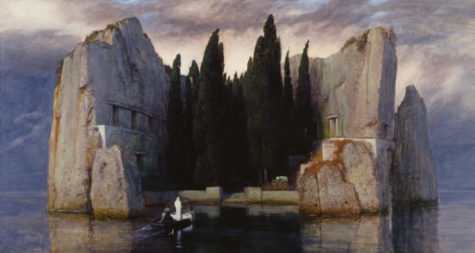Are Video Games Art?
The debate of video games as an art-form has roots in the origins of other forms of media, such as film and television. When film was young it was not yet considered art, rather, it was considered a technological advancement. However, as the technology around filmmaking evolved, so did its expressive ability.
Movies were now able to not only tell a story, but present ideas and emotions to the viewer. In the early days of video games, a game consisted only of mechanics, with the attempt to extend game time or eat quarters in an arcade. Nevertheless, as game technology developed, and as the memory of a given machine got bigger and the displays more vivid, so did the expressive abilities of games. Now, games could tell full stories and rely on their motifs to keep a player engaged. A game motif is all of the models, animations, music and sounds— which are more easily seen as art if taken alone. What a video game does is it combines these aspects and introduces the game mechanics. The goal of a game’s mechanics is to present a challenge to the player, and the player’s goal is to beat said challenge. How these mechanics work is dictated by the designers and programmers who make the games, and who determine how a game “feels” to play. Game mechanics ultimately gives not only the player but the game a form of expression that is limited only by the designer’s goals.
A game’s gameplay can take many different forms. Nowadays, games are even defined by what form their gameplay mechanics take. Be it a shooter, survival horror, fighting, MOBA, MMO, action, or something else, the way the gameplay functions drastically changes your relationship with it. All designers have an idea they want to present or an emotion they want you to feel, and they use the gameplay and motifs to convey it. Early examples of this are horror games such as Resident Evil and Silent Hill; and more cutesy games such as Boku No Natsuyasumi and Kirby’s Dreamland. Resident Evil and Silent Hill are two games of the “Survival Horror” genre. They use awkward and clunky movements and odd camera angles to take the feeling of control away from the character. They take enough control away to make the enemies feel stronger and more threatening. They use limited resources to make fighting back against these enemies a constant balance between getting stuck with no resources or leaving them where they might attack you later. The camera angles stage odd disorienting rooms with atmospheric effects, such as fog, to obscure what’s around you. This creates fear by having the player always question, “what’s behind the corner?”, “what’s that noise?”, “what’s that thing I saw slip by?” The droning musical tones and creepy sound design create a feeling of unease which culminates in a feeling of dread of what’s to come. Often the thought of these unknown horrors is scarier than the horrors themself.
Kirby’s Dreamland and Boku No Natsuyasumi focus their gameplay on making a mostly relaxing low stakes experience. Boku No Natsuyasumi literally translates to “my summer vacation,” and focuses on giving the player freedom to explore. There is no way to win, you explore around the countryside and partake in simple activities, such as catching bugs and fishing. Kirby’s Dreamland has very little motif to keep its story together, it’s more of a casual experience. All the designs and animations have a charming cuteness about them which is aided by its simplistic combat and platforming. Kirby gets an infinite amount of jumps so that even if you miss a platform you can still get back to it without really trying. This means that the game feels very low stakes, there is little risk for the reward, coming together to form a more laid back experience where you can just enjoy its presentation. These are all very early examples of games expressing ideas or emotions.
Bloodborne is a great example of the results in merging motifs with gameplay. It is a very demanding game, one that expects a certain level of mastery in order to beat its tough encounters. The game gives the feeling of triumph when you beat a boss, to give you a much more engaging experience. Its beautifully grotesque creatures and music give a sense of how much its world has evolved over time. Through its engaging gameplay, the game creates a personal experience, but one that you can form connections through.
Art, however, is up to the interpretation and experience of the viewer. A piece like Nier: Automata, Silent Hill 2 or Metal Gear Solid 3 might be something that I view as art, and you may not. What matters is what it makes you feel when you play it. Nier: Automata presented concepts on the human psyche —despair and hope— that resonated with me as a player; and showed that not everything has a clear-cut answer. Silent Hill 2 gave me moments of dread through its atmosphere set up via its motifs, such as its opening line “in my restless dreams I see that town.” Metal Gear Solid 3 makes you feel like a spy in a thriller through the various twists and turns of its gameplay and story, with an ending that sticks with you long after the credits roll. These feelings are just as valid to me as those I feel while watching The Godfather, Pulp Fiction, Harakiri, or looking at the Isle of the Dead. At the end of the day, it’s an individual experience. Games have undoubtedly gotten more expressive by their very nature of technology, but one individual’s interpretation of its expression can be completely different than others. I can only recommend that you make that conclusion yourself.










